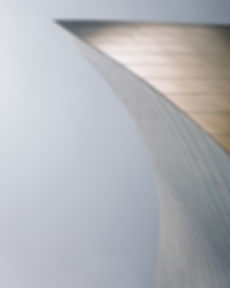Plastic Top Joints for English Horns
- Carolyn Hove
- Jul 31, 2022
- 3 min read
Updated: Aug 1, 2022
I’ll admit it - for years, I didn’t believe that plastic top joints for either oboes or English Horns could possibly compare favorably to wood. I held a bias against plastic, likely due to memories of my first oboe which was a student model Bundy. But in the summer of 2013, I bought a plastic top joint made by F. Lorée and ever since then, I have played it for months at a time.
In the late 2000’s, I recall trying a Lorée English Horn from RDG, Inc. I was very impressed with the horn and quite surprised to learn that the top joint was plastic. The tone was beautiful and the intonation lined up very well. After that experience, I began to consider ordering a top joint to use with my English horns.
The summer home of the Los Angeles Philharmonic is the infamous Hollywood Bowl - a venue that seats 17,000. The orchestra is in residence at the Bowl from late June through mid-September. Weather conditions present a constant challenge because we experience everything from extremely hot, dry conditions to cold, damp conditions - often times during the same day! It’s very common for the temperature onstage at the beginning of a concert to be quite warm, but the temperature often drops a great deal throughout the concert. As a result, playing a wooden wind instrument at the Bowl can be risky due to the ever present danger of cracking. This is the primary reason that I decided to order a plastic top joint. Since receiving it, I have played mine at the Bowl and almost exclusively during both domestic and International concert tours. I have also played it a great deal during our Winter concert seasons at Walt Disney Concert Hall.
So, what are some of the differences between wood and plastic top joints? Are there advantages and/or disadvantages to each?
The main advantage to a plastic top joint is that it is nearly impossible for it to crack. And unlike wood, the bore will not change. Another advantage is that, since there are no grain lines to affect the tone holes, it is easier to obtain a perfect seal. As someone who is very sensitive to whether or not my instruments are sealing properly, I consider this aspect of a plastic top joint to be a real plus. The tone quality of my plastic top joint is excellent. Once I found a bocal that was well suited to the top joint, I was comfortable playing it. In March 2018, I was honored to be one of the soloists invited to perform and celebrate the 50th annivesary of Japan Double-Reed, Inc. in Tokyo. Alain DeGourdon, the owner of F. Lorée attended the event. After the concert, I told Alain that I had played my plastic top joint. He replied that he never would have known had I not told him!
As for disadvantages, it is more difficult to tune since the plastic is much harder than wood. However, are truly skilled repair person, such as Mark Chudnow (Mark Chudnow Woodwinds), can successfully make adjustments to the tone holes. Since wood and plastic are very different materials, the resistance is different between the two. The plastic top joint I own has more resistance than my wooden top joints. To compensate for this difference, I found a bocal that matched well, despite fluctuations in the temperature onstage. Thus, I did not need to make significant changes to my reeds. However, I use a greater amount of air pressure to achieve the kind of ring and shimmer that I want in my tone. In addition, I have found that it’s necessary to swab the top joint far more frequently. Unlike wood, the condensation cannot soak into the plastic. As a result, it can easily end up in the tone holes.
Another consideration is that the cost of a plastic top joint is slightly higher than that of a wooden top joint. But, in my case, it has been well worth the investment many times over.
A real advantage of owning a plastic top joint is that it can prolong the life of the wooden instrument by providing a viable alternative to the wear and tear of daily use. It’s similar to owning two instruments, thus giving the performer additional options. I believe that nothing compares to the tone and ring of a gorgeous wooden English Horn, especially if the bocal truly enhances the natural vibrations of the wood. Of course, one must be vigilant to avoid circumstances under which the instrument could crack. This includes applying a small amount of oil to the bore on a regular basis. And of course, never blow warm, moist air into a cold instrument.
However, I maintain that a beautifully made plastic top joint in combination with a bocal that compliments the instrument is a close runner-up.


